Recent Water Damage Posts
Why call SERVPRO of Gurnee?
4/5/2024 (Permalink)
Here at SERVPRO of Gurnee, we realize you have many options when selecting a restoration and emergency service provider. So, why should you call us?
- We are a one stop shop that can handle any job from start to finish.
- As one of 1700 individually owned and operated franchises we have access to more support during harsh weather.
- We are “Faster to any size disaster”.
- SERVPRO is a trusted name in the mitigation and restoration industry.
- We work with all major insurance carriers and have relationships with many local providers.
- Our personal franchise has over 35 years of combined experience in any situation.
- We always put our customers needs first.
- We have the equipment and training to get any job completed.
- We can easily handle both commercial and residential properties.
- Open 24 hours a day, 7 days a week, 365 days a year.
- We are locally owned and operated so we live and work in the same communities you do.
- We love what we do and want to help you!
If you have questions, need any assistance or would like a free estimate. Give us a call today 847-557-1080.
10 Tips to Prevent Frozen Pipes in your Northern Lake County Home
1/20/2023 (Permalink)
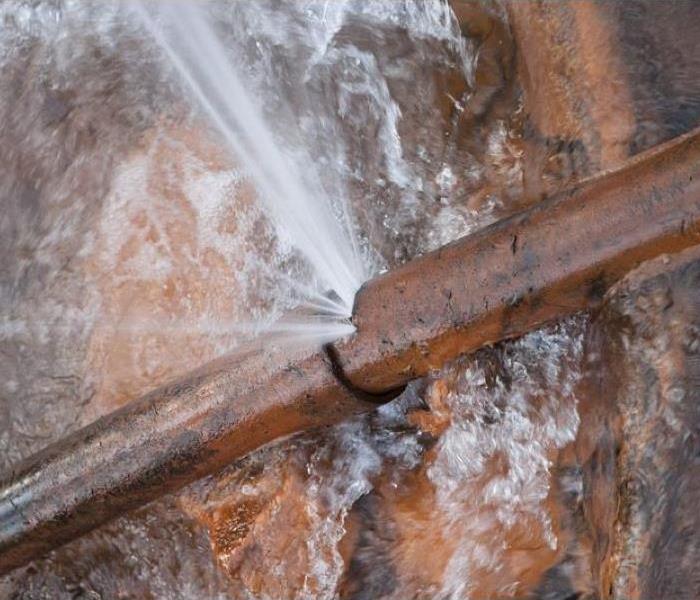 Burst plumbing can release up to 12 gallons of water per minute! That can create a water damage disaster.
Burst plumbing can release up to 12 gallons of water per minute! That can create a water damage disaster.
Frozen or burst pipes are expensive problems that homeowners dread facing during blustery Midwest winters. Here are ten simple tips for homeowners to help prevent the frustration and mess of this common plumbing nightmare.
Insulate Pipes
This is a relatively inexpensive task that could save you thousands in potential repairs. When insulating, pay particular attention to pipes in unheated, interior spaces of your home, such as in your attic, garage or basement. The most common kinds of pipe insulation are made from fiberglass, polyethylene or foam
Open Cabinet Doors
Keep kitchen and bathroom cabinet doors open during particularly cold temps to promote warm air circulation around plumbing fixtures. You may need to find a temporary home for any household chemicals if you have children or curious pets.
Keep Thermostat Settings Consistent
This may cost you a little more overall, but the cost is a small fraction of the potential damage caused by a burst pipe.
Seal Crawl Spaces
If your winter looks like it will be especially bitter, you will probably need to temporarily cover any ventilated crawl spaces in your home, which will reduce the amount of cold air surrounding your pipes.
Use Heating Tape
This is helpful in exterior spaces that are harder to quickly access. There are two different kinds of heating tape you can use — self-monitoring and manual. The first type of heating tape has a sensor and turns on and off by itself whenever it senses that the pipe needs more heat. The manual type of heating tape requires you to plug it in whenever heat is needed and unplug it once the pipe is warm. Like any heating system, electrical heating tape can be dangerous. Make sure to follow the manufacturer’s instructions and safety procedures when applying it to your pipe systems.
Keep Garage Doors Closed
This is an easy one! A garage door accidentally left open leaves any water supply lines vulnerable to freezing temperatures, which is a disaster waiting to happen.
Let Faucets Drip
Running water, even a small trickle, carries more energy than standing water. Friction warms the water slightly, making it more unlikely to freeze. This will also relieve pressure in pipes which could save them from bursting even if they do freeze.
Seal Cracks and Openings
Perform an inspection of your home. Do you find any cracks or openings? Caulk these areas to keep excess frigid air from entering your home.
Open Interior Doors
This will help keep temperature consistent through your home.
Keep the Heat On
It may be tempting to turn off the heat to save on energy bills while you are out of town, but keeping the thermostat above 55 degrees or higher is appropriate to keep your pipes safe from freezing.
Even if you diligently maintain your home, you may still sustain damage from frozen plumbing. In the event you need immediate help, call SERVPRO of Gurnee any time at 847-838-2954. We are here to help 24/7/365 and will even call a plumber for you if needed.
Northern Lake County Flooded Basements
11/20/2022 (Permalink)
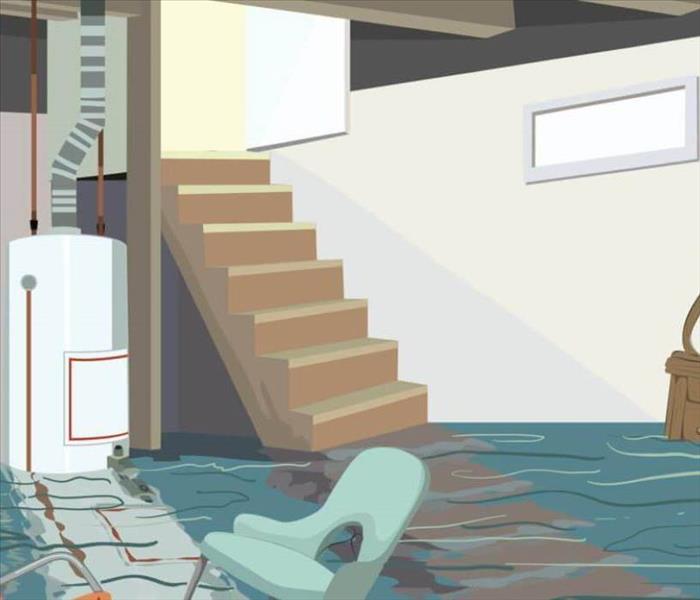 If this is a familiar scene in your home or business, we can help! Call SERVPRO of Gurnee today.
If this is a familiar scene in your home or business, we can help! Call SERVPRO of Gurnee today.
Flooding most often occurs during heavy rainfall, but can happen any time for a variety of reasons. Basements are more prone to flooding because they are the lowest level of a building or home and are normally built partly or entirely below ground level. There are a number of reasons why your basement could flood, including:
- A blocked or failed sewer lateral pipe
- Heavy rain causes surface water to pool around your home
- Storm sewer backup
- Sanitary sewer backup
- Foundation drainage failure
- Water supply-line break or hot-water tank failure
SERVPRO of Gurnee personnel are Flooded Basement Specialists:
- We are Available 24 hours/7 days per week/365 days a year
- We’re a Preferred Vendor to most National Insurance Companies
- We Can Bill The Insurance Directly – One Less Thing For You To Worry About
- Our Technicians are Highly-Trained in Water Restoration Techniques
- We use s500 IICRC Restoration Standards
- We use advanced Inspection and Extraction Equipment
A flooded basement can jeopardize your health, safety, and your home’s integrity. It’s worth making a call to SERVPRO of Gurnee and letting our trained, professional crews handle the situation safely and correctly. We have earned the trust of hundreds of homeowners, business owners, and property professionals.
Basement Flooded? Call SERVPRO of Gurnee Today- We’re Ready To Help - 847-838-2954
Content Restoration after Water Damage
9/20/2022 (Permalink)
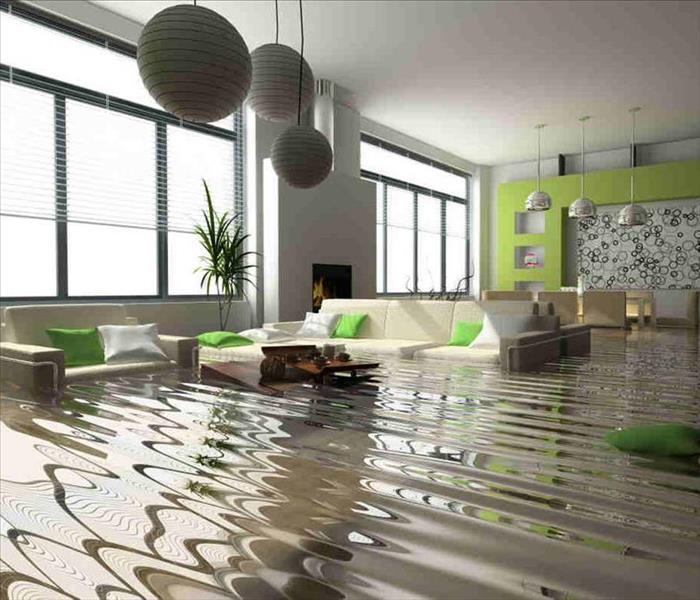 SERVPRO of Gurnee can help dry and restore your commercial or residential space.
SERVPRO of Gurnee can help dry and restore your commercial or residential space.
Restore Vs. Replace
We specialize in cleaning contents after water damage. SERVPRO of Gurnee strives to restore instead of replace to help keep insurance costs down and save your sentimental items. So how do we assess items that have been exposed to water? There are a few main considerations:
- Class of water affecting the items. Is the water contaminated?
- Materials affected. Are the items made of porous or non-porous materials?
- Length of time affected. How long has the water been standing stagnant?
When should you replace?
- Soft/Porous contents affected by water containing sewage. Category 3 or “Black Water”
- Materials have been affected for an extended period of time and are showing signs of microbial growth.
When can you restore?
- Hard contents that have not been penetrated by contaminated water.
- Soft contents that have been affected by Category 1 or “clear” water and sometimes Category 2 “gray” water.
At SERVPRO of Gurnee, our first step is to determine which items have been exposed to water as well as to what category of water. Then we make sure the items are dry and free of any moisture. This helps our water damage professionals determine what can be saved and what cannot. This process is also used for furniture, upholstery, and carpet cleaning and restoration.
Ejector Pump Vs Sump Pump: What’s the Difference?
7/20/2022 (Permalink)
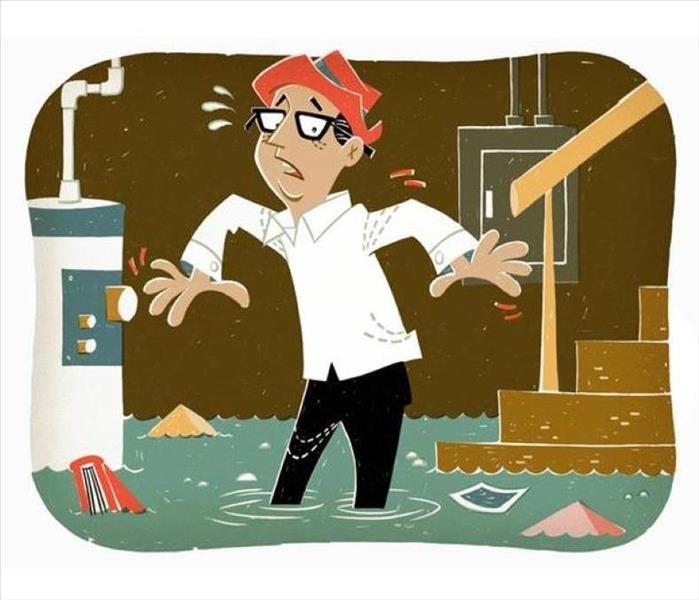 SERVPRO of Gurnee is here to help take the stress out of your water or sewer cleanup and restoration. We are available for your call 24/7/365.
SERVPRO of Gurnee is here to help take the stress out of your water or sewer cleanup and restoration. We are available for your call 24/7/365.
EJECTOR PUMP
Most homes are built so gravity can transport waste to the sewer system. For this to be possible, the home must be higher than the sewer pipes so the waste can drain properly. Sometimes, however, this isn’t possible because of a home’s location or because of plumbing in the basement that reaches deeper than the main sewer lines. In these instances, an ejector pump is used to force sewage out of the home’s plumbing.
One of the biggest differences between an ejector pump and a sump pump is that an ejector pump has the ability to move solid waste with water pressure. The ejector pump breaks up solid waste to force it farther down the line and out to the main sewer. Without an ejector pump, basement bathrooms and any plumbing below the main sewer level would be unable to clear waste. The result would be sewage backing up into the home.
SUMP PUMP
A sump pump provides a different function than an ejector pump. Sump pumps do not deal with waste or sewage at all. Instead, a sump pump sits in a pit beneath your home. This pit is drainage for excess water that builds up during rainstorms, snowmelt, or flooding of any sort. When excess water accumulates in your sump pit, the sump pump expels the water out through pipes that drain to an exterior location far enough from your home to not cause any issues or backflow. Without a sump pump, basements could be flooded every time it rains. A sump pump ensures that you keep a dry home, even when torrential storms rage outside.
Sump pumps are mostly found in wet climates or where basements are prevalent. They are less common in dry areas or where basements are not popular.
Sump pumps cannot be joined to a sewer line. Instead, they must drain outside. Sump pumps also cannot handle debris. They generally have a screen or grate on the intake so the pump doesn’t suck up anything that could damage and ruin the pump. Sump pumps are meant to transport water only.
While each of these is important in its own right, ejector pumps and sump pumps are different tools that perform very different jobs. Ejector pumps push waste and sewage uphill to remove it from plumbing that’s below the main sewer level. Sump pumps stop your basement from flooding by evacuating water that accumulates from natural sources. If you require one of these pumps but don’t have it, the results could be disastrous.
In the event you do sustain damage from a failed ejector pump or sump pump, SERVPRO of Gurnee is here to help 24/7/365. Give us a call at 847-838-2954 for a no-cost assessment of your water damage situation.
Flood Insurance and Water Backup Coverage: What’s the Difference?
5/20/2022 (Permalink)
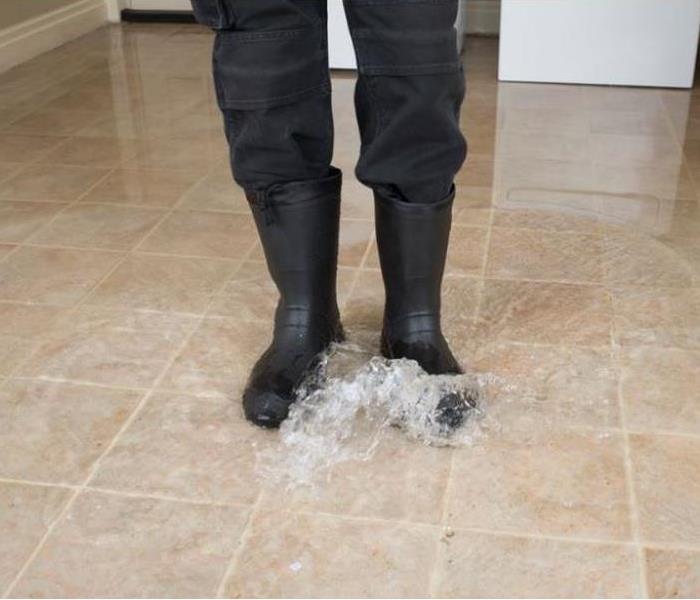 Water in your basement? The professionals at SERVPRO of Gurnee are here to help!
Water in your basement? The professionals at SERVPRO of Gurnee are here to help!
Spring and Summer in Lake County is a happy time for so many home and business owners who are ready for warmer weather, and sunshine! We Midwesterners look forward to that first day on or in the water. So what happens when that water we love so much finds its way into our basements? How can property owners recover losses to their property from flood waters?
Water/Sewer Backup Coverage
Most homeowners insurance policies come with an optional endorsement for water backup and sump discharge/overflow which will cover losses, up to a certain limit, caused by the backup of water or waterborne materials through a sewer or through a drain. It will also cover water or waterborne material that overflows from a sump, even if the backup of water is due to the mechanical breakdown of the sump pump. Coverage includes damage to property but excludes the sump pump and any related equipment that has broken down. Contact your insurance professional for more information about this coverage and its limits.
The endorsement does not cover damages caused by a flood. A separate flood insurance policy needs to be obtained to cover losses due to flooding.
Flood Insurance
What is a flood? The dictionary defines “flood” as rising and overflowing of water onto normally dry land. For the purpose of insurance, “rising” is the key to distinguish flood damage from water damage. Basically damage that has occurred from water that has been on the ground at some point before causing damage to your home is considered flood damage, and would not be covered by your homeowners insurance policy.
Flooding can happen anywhere; even if your home is not in a flood plain. Flood insurance is available to all homeowners who live in a participating community, which must enforce floodplain ordinances and building requirements that meet or exceed FEMA guidelines. If your community does not participate in the NFIP, you can make a request for it to do so through your mayor, city council or county commissioner’s office. Contact your insurance professional for more information about this coverage and its limits.
In the event you do sustain property damage from any type of flooding, SERVPRO of Gurnee is here to help. We are available 24/7/365 at 847-838-2954 for your emergencies.
Sump Pump Maintenance Checklist
3/20/2022 (Permalink)
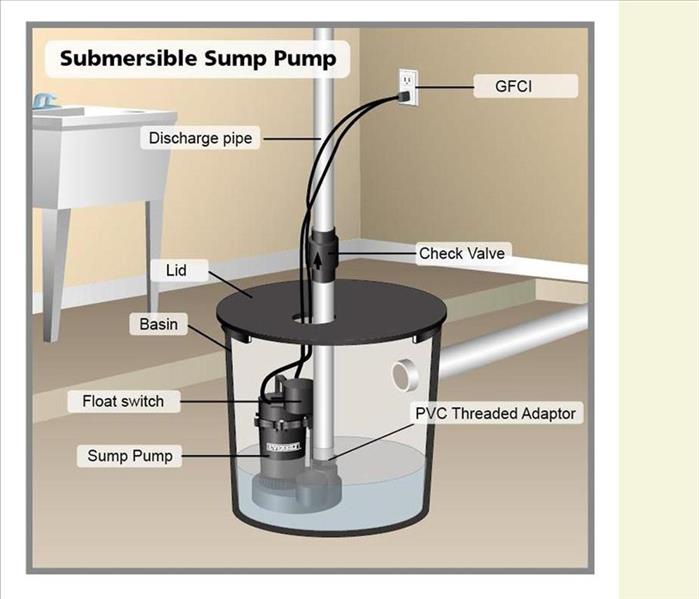 Maintaining your sump pump could potentially save thousands in water damage.
Maintaining your sump pump could potentially save thousands in water damage.
When was the last time you maintenanced your sump pump? Here are some tips to show your sump pump some love and keep your basement dry as we enter the rainy season of spring.
Make sure your sump pump is totally upright. Your sump pump should be sitting on solid, even ground. Any sort of leaning can shift the water in the pump’s pit and put unnecessary pressure on its components.
Open it up. Take the cover off the sump pump pit or basin and have a look inside. Clear any debris, mud or rocks that you find, as any foreign items can clog your sump pump and cause an overflow.
Double-check the drain hose. Check to make sure the drain hose is connected, and that it’s not blocked or frozen. A clogged drain hose can cause your sump pump to run continuously, as it won’t be able to dispose of the water that’s filled its pit.
Clear out the inlet screen. Make sure the inlet screen is allowing water to enter your sump pump’s pit. If your inlet screen is blocked, water won’t be able to make its way into the sump pumps pit and could lead to a basement flood.
Keep it afloat. Your sump pump’s float controls when it will turn on and pump excess water out. Make sure the float component can move freely and isn’t blocked. A malfunctioning float can cause your pump to not run when it’s supposed to, or run constantly, eventually burning out your pump’s engine.
Make sure it’s flowing away from your house. The next time you hear your sump pump running, go outside and make sure its discharge pipe is pumping the water away from your home at a safe distance. If it’s too close, the water could seep back into your pump, causing your pump to run continuously and inefficiently. The more your sump pump runs, the more likely it is to burn out early in its life span.
While you don’t want your discharge pipe too close to your house, shed, garage or other structure, make sure it does stay on your property. You’ll have some unhappy neighbors if your sump pump is pushing your excess water onto their lot.
Give your sump pump a test run. Fill the pit with a bucket of water to turn your pump on. Watch it carefully to see if it’s getting rid of the water, then check the discharge pipe outside to make sure it’s disposed of properly. If the pump doesn’t run, make sure it’s plugged in and its power cord is in working order.
Plan for the unexpected. Having a backup battery or generator can be crucial if a strong rain storm comes complete with a power outage. And eventually, your sump pump may give out without the help of a power outage. To avoid the stress of trying to buy and install a new sump pump while the water seeps closer and closer to your basement, have a backup sump pump handy — and be sure to test it regularly, too.
Call a professional. You’ve checked the power cords, discharge pipe, inlet screen and every other piece of the pump, but still can’t figure out what’s wrong. It’s time to call a professional! Risking your basement and everything else in it isn’t worth maintaining your pride as a handyman or woman — get it fixed and fast!
If worse comes to worst, and you do have a backup and need assistance with damage from water or sewage, call SERVPRO of Gurnee for 24/7 help at 847-838-2954.
Water Damage Timeline
2/25/2022 (Permalink)
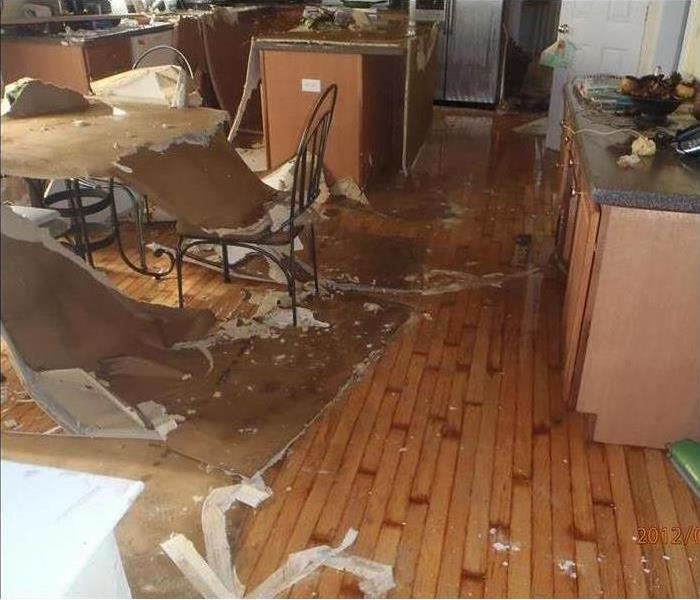 Water damage doesn't wait! Call SERVPRO of Gurnee for help today at 847-838-2954.
Water damage doesn't wait! Call SERVPRO of Gurnee for help today at 847-838-2954.
Within Minutes
- Water quickly spreads throughout your property, saturating everything in its path.
- Water is absorbed into walls, floors, upholstery, and belongings.
- Furniture finishes may bleed, causing permanent staining on carpets.
- Photographs, books, and other paper goods start to swell and warp.
Hours 1 - 24
- Drywall begins to swell and break down.
- Metal surfaces begin to tarnish.
- Furniture begins to swell and crack.
- Dyes and inks from cloth and paper goods spread and stain.
- A musty odor appears.
48 Hours to 1 Week
- Mold and mildew may grow and spread.
- Doors, windows, and studs swell and warp.
- Metal begins to rust and corrode.
- Furniture warps and shows signs of mold.
- Paint begins to blister.
- Wood flooring swells and warps.
- Serious biohazard contamination is possible.
More Than 1 Week
- Restoration time and cost increase dramatically; replacing contaminated materials and structural rebuilding may be extensive.
- Structural safety, mold growth, and biohazard contaminants pose serious risks to occupants.
SERVPRO of Libertyville/North Chicago City/Lake Bluff specializes in the cleanup and restoration of residential and commercial property after a fire, smoke or water damage event. Our staff is highly trained in property damage restoration. From initial and ongoing training at SERVPRO’s corporate training facility to regular IICRC-industry certification, rest assured our staff is equipped with the knowledge to restore your property. We arrive quickly and start the water extraction process almost immediately. This immediate response helps to minimize the damage and the cleaning and restoration costs.
Ice Dam Tips for Northern Lake County Home and Business Owners
2/17/2022 (Permalink)
 Icicles hanging from your roof might be pretty, but they could be an indication that you may have an ice dam.
Icicles hanging from your roof might be pretty, but they could be an indication that you may have an ice dam.
An ice dam is a ridge of ice that forms at the edge of a roof and prevents melting snow (water) from draining off the roof. The water that backs up behind the dam can leak into a home and cause damage to walls, ceilings, insulation and other areas. Ice dams usually occur after a heavy snowfall and several days of freezing temperatures. Frequently the result will be a water spot or leak from the ceiling or wall under the roof damage.
Tips for handling and preventing ice dams
- Don’t get on your roof yourself; it could be dangerous.
- Avoid standing on the ground and “chipping away” at the ice. Not only could this cause damage to your roof, but you can be seriously injured by falling ice and debris.
- Seal air leaks and duct air leaks in your attic to stop warm air leakage.
- Check your attic insulation, replace anything damaged, and add additional insulation. This prevents warm air from your home from getting in your attic.
- Provide adequate attic ventilation. Check to make sure attic insulation is not blocking roof ventilation. Your attic should be a temperature similar to the outdoor temperature.
- Clean leaves and other debris from gutters before the first snow. This will help prevent ice build-up in gutters.
- Have an energy specialist or air sealing professional do an in-home evaluation. A good specialist will use diagnostic equipment to evaluate the performance of your home and generate a customized list of improvements.
If you have experienced interior water damage in your home or business, please utilize the professionals at SERVPRO of Gurnee. Our trained technicians are available 24/7/365 to assist with your water emergencies. Call today at 847-838-2954.
Preventing Water Damage from Frozen Pipes in Your Northern Lake County Home
1/25/2022 (Permalink)
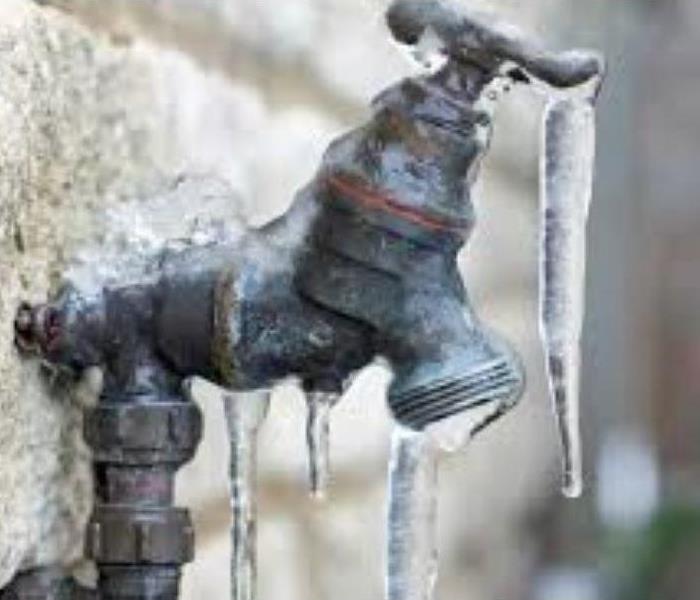 Frozen pipes are one of the biggest risks of property damage when the temperatures drop.
Frozen pipes are one of the biggest risks of property damage when the temperatures drop.
When temperatures dip during the winter, frozen pipes could be a concern for your home – but there are ways to prevent your property from disaster. Here are some helpful facts from the American Red Cross:
To Prevent Frozen Pipes
- Keep garage doors closed if there are water supply lines in the garage.
- Open kitchen and bathroom cabinet doors to allow warmer air to circulate around the plumbing. Be sure to move any harmful cleaners and household chemicals up out of the reach of children.
- When the weather is very cold outside, let the cold water drip from the faucet served by exposed pipes. Running water through the pipe - even at a trickle - helps prevent pipes from freezing.
- Keep the thermostat set to the same temperature both during the day and at night. By temporarily suspending the use of lower nighttime temperatures, you may incur a higher heating bill, but you can prevent a much more costly repair job if pipes freeze and burst.
- If you will be going away during cold weather, leave the heat on in your home, set to a temperature no lower than 55° F.
To Thaw Frozen Pipes
- If you turn on a faucet and only a trickle comes out, suspect a frozen pipe. Likely places for frozen pipes include against exterior walls or where your water service enters your home through the foundation.
- Keep the faucet open. As you treat the frozen pipe and the frozen area begins to melt, water will begin to flow through the frozen area. Running water through the pipe will help melt ice in the pipe.
- Apply heat to the section of pipe using an electric heating pad wrapped around the pipe, an electric hair dryer, a portable space heater (kept away from flammable materials), or by wrapping pipes with towels soaked in hot water. Do not use a blowtorch, kerosene or propane heater, charcoal stove, or other open flame device.
- Apply heat until full water pressure is restored. If you are unable to locate the frozen area, if the frozen area is not accessible, or if you can not thaw the pipe, call a licensed plumber.
- Check all other faucets in your home to find out if you have additional frozen pipes. If one pipe freezes, others may freeze, too.
In the event you suffer water damage from frozen plumbing fixtures or ice damming, SERVPRO of Gurnee is here to help 24/7/365 at 847-838-2954.
Water Damage in Northern Lake County: 3 Categories To Know
7/26/2021 (Permalink)
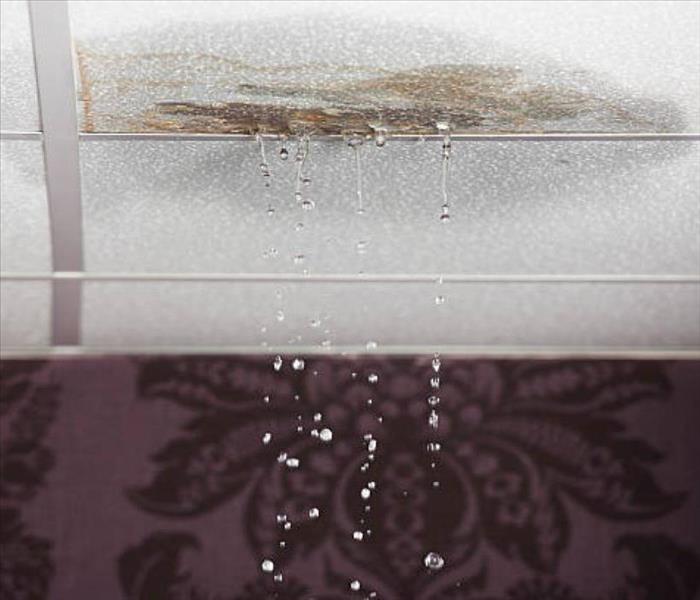 Often, water damage spreads to areas that cannot be seen. Call an expert for help to ensure all moisture has been removed.
Often, water damage spreads to areas that cannot be seen. Call an expert for help to ensure all moisture has been removed.
At SERVPRO of Gurnee, we pride ourselves on being the experts in water damage remediation. We ensure our technicians are educated by requiring them to become certified by the Institute of Inspection Cleaning and Restoration (IICRC) as Water Restoration Technicians. This gives them the ability to classify and categorize the type of water damage a property may have. With regard to infiltration, there are three categories of water. Knowing what these are and how to properly mitigate their damage is paramount to restoring your home or business to a healthy, safe state.
Category 1
Water originates from a sanitary water source and does not pose substantial risk from dermal, ingestion, or inhalation exposure. Examples include but are not limited to:
Broken water supply lines; tub or sink overflows with no contaminants; appliance malfunctions involving water-supply lines; melting ice or snow; falling rainwater; broken toilet tanks, and toilet bowls that do not contain contaminants or additives.
Category 2
Water contains significant contamination and has the potential to cause discomfort or sickness if contacted or consumed by humans. Category 2 water can contain potentially unsafe levels of microorganisms or nutrients for microorganisms, as well as other organic or inorganic matter (chemical or biological). Examples include but are not limited to:
Discharge from dishwashers or washing machines, overflows from washing machines, overflows from toilet bowls on the room side of the trap with some urine
Category 3
Water is grossly contaminated and can contain pathogenic, toxigenic, or other harmful agents and can cause significant adverse reactions to humans if contacted or consumed. Examples include but are not limited to:
Sewage; waste line backflows that originate from beyond any trap regardless of visible content or color; all forms of flooding from seawater; rising water from rivers or streams; and other contaminated water entering or affecting the indoor environment, such as wind-driven rain from hurricanes, tropical storms, or other weather-related events.
Category 3 water can carry trace levels of regulated or hazardous materials (e.g., pesticides or toxic organic substances).
In the unfortunate event that you experience water damage, call the experts at SERVPRO of Gurnee to help. We have the training and expertise to make sure your home or business is safe and clean. We are available 24/7/365 for your emergencies at 847-838-2954.
Water Damage from Sprinkler Systems: Cause and Effect
6/30/2021 (Permalink)
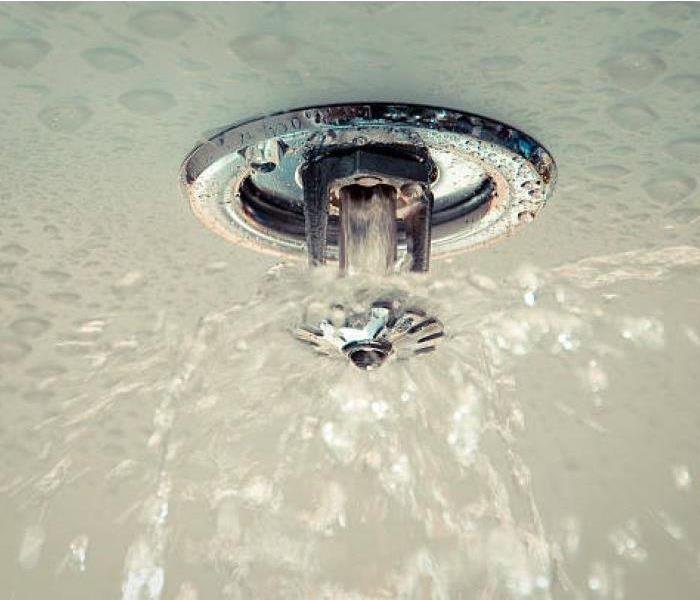 Inspection, testing and maintenance of fire sprinkler systems, along with adequate building heat, can help reduce the risk of future water damage.
Inspection, testing and maintenance of fire sprinkler systems, along with adequate building heat, can help reduce the risk of future water damage.
An automatic sprinkler system is a very valuable tool in fire suppression and prevention. Even so, by some uncontrollable event or if not properly maintained, these systems may fail. This failure could result in disaster by fire or from serious water damage from the sprinklers if water is unexpectedly released.
Common Causes for Sprinkler System Failures
- Freezing of water filled pipes
- Mechanical damage
- Installation defects
- Deliberate sabotage
- Overheating from excessive temperatures
- Corrosion of sprinklers, fittings, pipes, and other components
- Environmental stress cracking of PVC plastic sprinkler pipe and fittings
- Manufacturing defects, including recalled sprinklers
Potential Hazards of Water Damage
- Damage - Destruction to property
- Disruption - Loss of use of property during repairs
- Health Effects - Mold can develop causing health hazards
- Costs - Repair and/or replacement of sprinkler system
- Reputation - Lost customers or tenants due to unusable space
Prevention Tips
- Maintain fire sprinklers in accordance with recognized standards
- Ensure installations are completed by experienced and licensed contractors
- Take action to reduce chances of system freezing
- Call SERVPRO of Gurnee if water damage is experienced in your facility.
SERVPRO of Gurnee has the experience and professional staff to bring your property back to its preloss condition quickly and efficiently. Call 847-838-2954 today for a free assessment of your damage.
Four Classes of Water Damage
3/24/2021 (Permalink)
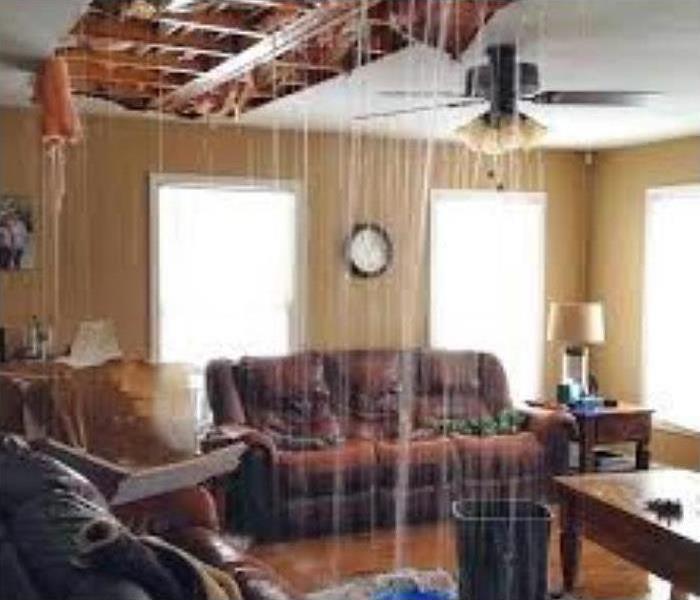 If this is a familiar scene in your home or business, we can help! Call SERVPRO of Gurnee today.
If this is a familiar scene in your home or business, we can help! Call SERVPRO of Gurnee today.
Classes of Water Damage losses are determined by the rate of evaporation based on the type of materials affected by water damage to your property. Determining the Class of Water is an important first step, and will determine the amount and type of equipment utilized to restore your business. There are four IICRC water damage classifications, and they are as follows:
Class 1 - Slow Evaporation Rate
Water losses that affect only part of a room or area, or losses with lower permeance/porosity materials (e.g., plywood, particle board, structural wood, vinyl composition tile or VCT, concrete). Little or no wet carpet or cushion is present. Minimum moisture is absorbed by materials, releasing moisture slowly.
Class 2 - Fast Evaporation Rate
Water losses that affect an entire room or carpet and cushion. Water has wicked up walls 12" - 24". There is moisture remaining in structural materials (e.g., plywood, particle board, structural wood, concrete).
Class 3 - Fastest Evaporation Rate
Water may have come from overhead. Ceilings, walls, insulation, carpet, cushion and sub-floor in the entire area are saturated.
Class 4 - Specialty Drying Situations
These consist of wet materials with very low permeance/porosity (hardwood, plaster, brick, concrete, stone, and crawlspace). Typically, there are deep pockets of saturation, which requires very low specific humidity.
In the event you do experience water damage in your Northern Lake County home, please do not hesitate to call SERVPRO of Gurnee at 847-838-2954. We are here to help 24/7/365 with your water damage emergencies.
6 Common Causes for Plumbing Fails in Waukegan, IL Homes
2/26/2021 (Permalink)
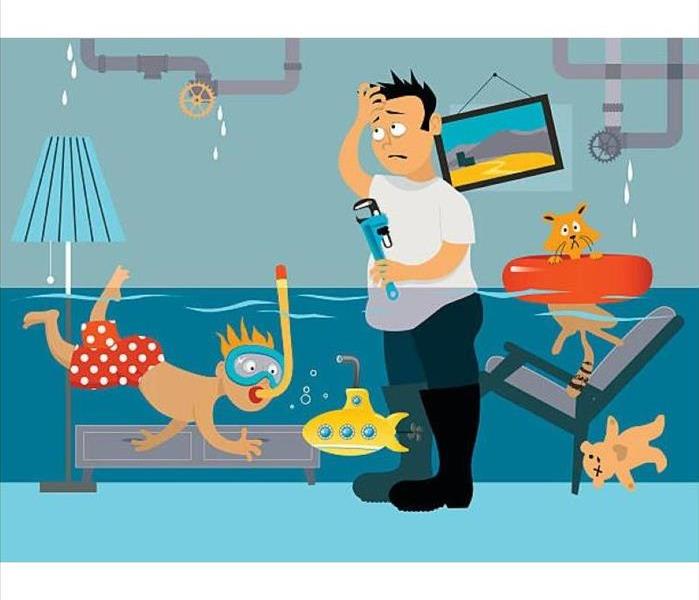 We all love a good laugh, but water damage is no fun! Call the professionals at SERVPRO of Gurnee for help.
We all love a good laugh, but water damage is no fun! Call the professionals at SERVPRO of Gurnee for help.
SERVPRO of Gurnee has been helping homeowners and business owners repair water damage caused by plumbing failures for many years. We have seen all kinds of water damage, and we have the training, experience, and equipment to restore the emergencies you may encounter. While there are many reasons pipes burst or fail, here are some top culprits:
- Freezing
- Tree root encroachment
- Corrosion
- Soil Shifting
- High water pressure
- Clogs
Some of these examples may be prevented through maintenance of your pipes. Water pipes, if not properly maintained and insulated, can cause a costly repair later and, in some cases, even destroy or cause extensive damage to your home. Smaller water leaks can, over time, damage your home as well as attract mold growth.
In the event you do sustain damage from a failed plumbing system, SERVPRO of Gurnee is here to help 24/7/365. Give us a call at 847-838-2954 for a no-cost assessment of your water damage situation.
Roof Snow Removal Tips to Prevent Damaging Ice Dams in N Lake County, IL
2/18/2021 (Permalink)
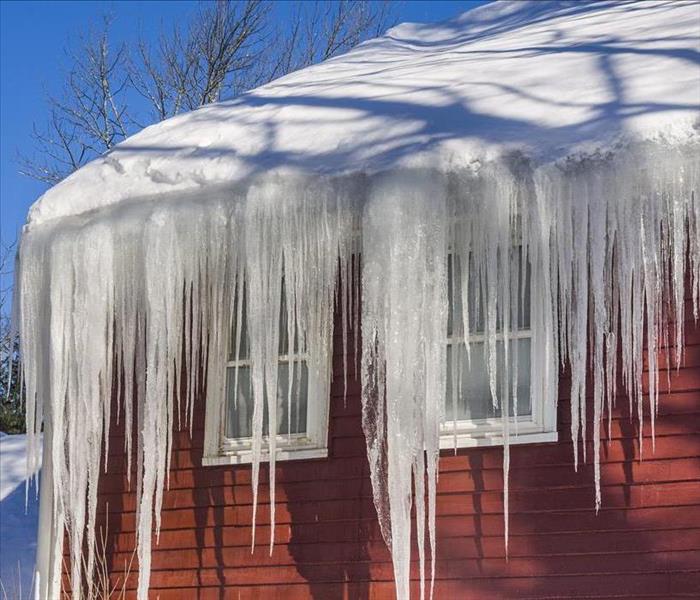 Winter storms can cause water damage inside your home. Call SERVPRO of Gurnee for help if you experience damage from an ice dam.
Winter storms can cause water damage inside your home. Call SERVPRO of Gurnee for help if you experience damage from an ice dam.
Snow and ice storms on top of already large snow accumulation make snow removal from roofs a growing concern in the midwest. Removing snow completely from a roof surface can result in serious damage to the roof covering and possibly lead to leaks and additional damage, according to the Snow Load Safety Guide, published as part of the Risk Management Series by the Federal Emergency Management Agency (FEMA). FEMA says that at least two inches of snow should be left on the roof.
Most of the time, it’s better to leave the snow alone if you can, because removing it can pose a risk to the workers and the structure. But if you do have to get the snow off the roof, here are some tips from FEMA for removing snow safely and effectively:
- Don’t use mechanical snow removal equipment. The risk of damaging the roof membrane or other rooftop items outweighs the advantage of speed.
- Don’t use sharp tools, such as picks, to remove snow. Use plastic rather than metal shovels.
- Do remove drifted snow first at building elevation changes, parapets and around equipment.
- Do remove any snow remaining after you’ve removed drifts from the center portion of the roof.
- Do remove snow in the direction of the primary structural elements on the roof to prevent unbalanced snow loading.
- Don’t stockpile snow on the roof.
- Do keep snow away from building exits, fire escapes, drain downspouts, ventilation openings and equipment.
- Do remove snow starting at the ridge and moving toward the eave for gable and sloped roofs whenever possible.
- Do use a non-metallic rake for steep snow roofs if possible to avoid damage to roofing materials.
- Do have someone below the roof to keep foot traffic away from locations where falling snow or ice could cause injuries.
- Do be careful of dislodged icicles whenever you’re removing snow from a roof because an icicle falling from even a short height can still cause damage or injury.
- Do be prepared for roof snow to slide while you’re using a roof rake, and stay a safe distance away from the eave of the roof to be sure you’re out of sliding range.
If you do experience water damage or collapse caused by an ice dam or heavy snow, SERVPRO of Gurnee has skilled workers standing by to help. We are available 24/7/365 to assist with your water damage emergencies.
10 Tips to Prevent Frozen Pipes in your Northern Lake County Home
1/26/2021 (Permalink)
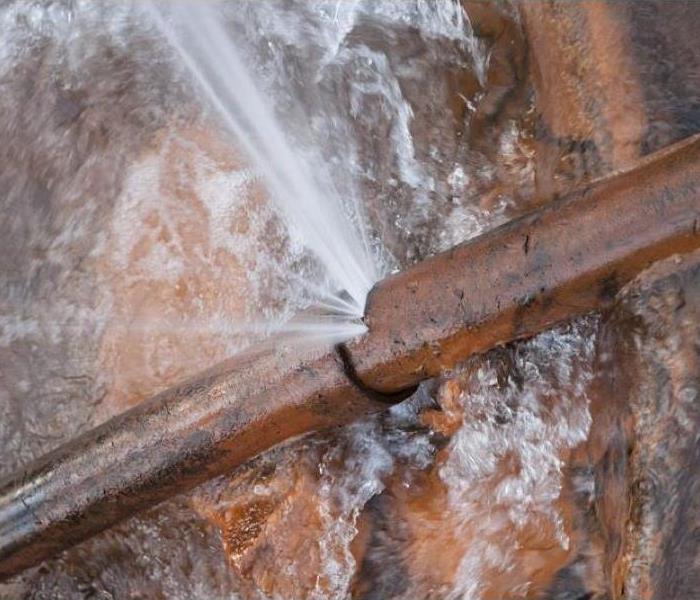 Burst plumbing can release up to 12 gallons of water per minute! That can create a water damage disaster.
Burst plumbing can release up to 12 gallons of water per minute! That can create a water damage disaster.
Frozen or burst pipes are expensive problems that homeowners dread facing during blustery Midwest winters. Here are ten simple tips for homeowners to help prevent the frustration and mess of this common plumbing nightmare.
Insulate Pipes
This is a relatively inexpensive task that could save you thousands in potential repairs. When insulating, pay particular attention to pipes in unheated, interior spaces of your home, such as in your attic, garage or basement. The most common kinds of pipe insulation are made from fiberglass, polyethylene or foam
Open Cabinet Doors
Keep kitchen and bathroom cabinet doors open during particularly cold temps to promote warm air circulation around plumbing fixtures. You may need to find a temporary home for any household chemicals if you have children or curious pets.
Keep Thermostat Settings Consistent
This may cost you a little more overall, but the cost is a small fraction of the potential damage caused by a burst pipe.
Seal Crawl Spaces
If your winter looks like it will be especially bitter, you will probably need to temporarily cover any ventilated crawl spaces in your home, which will reduce the amount of cold air surrounding your pipes.
Use Heating Tape
This is helpful in exterior spaces that are harder to quickly access. There are two different kinds of heating tape you can use — self-monitoring and manual. The first type of heating tape has a sensor and turns on and off by itself whenever it senses that the pipe needs more heat. The manual type of heating tape requires you to plug it in whenever heat is needed and unplug it once the pipe is warm. Like any heating system, electrical heating tape can be dangerous. Make sure to follow the manufacturer’s instructions and safety procedures when applying it to your pipe systems.
Keep Garage Doors Closed
This is an easy one! A garage door accidentally left open leaves any water supply lines vulnerable to freezing temperatures, which is a disaster waiting to happen.
Let Faucets Drip
Running water, even a small trickle, carries more energy than standing water. Friction warms the water slightly, making it more unlikely to freeze. This will also relieve pressure in pipes which could save them from bursting even if they do freeze.
Seal Cracks and Openings
Perform an inspection of your home. Do you find any cracks or openings? Caulk these areas to keep excess frigid air from entering your home.
Open Interior Doors
This will help keep temperature consistent through your home.
Keep the Heat On
It may be tempting to turn off the heat to save on energy bills while you are out of town, but keeping the thermostat above 55 degrees or higher is appropriate to keep your pipes safe from freezing.
Even if you diligently maintain your home, you may still sustain damage from frozen plumbing. In the event you need immediate help, call SERVPRO of Gurnee at 847-838-2954. We are here to help 24/7/365 and will even call a plumber for you if needed.
Ejector Pump Vs Sump Pump: What's the Difference?
7/27/2020 (Permalink)
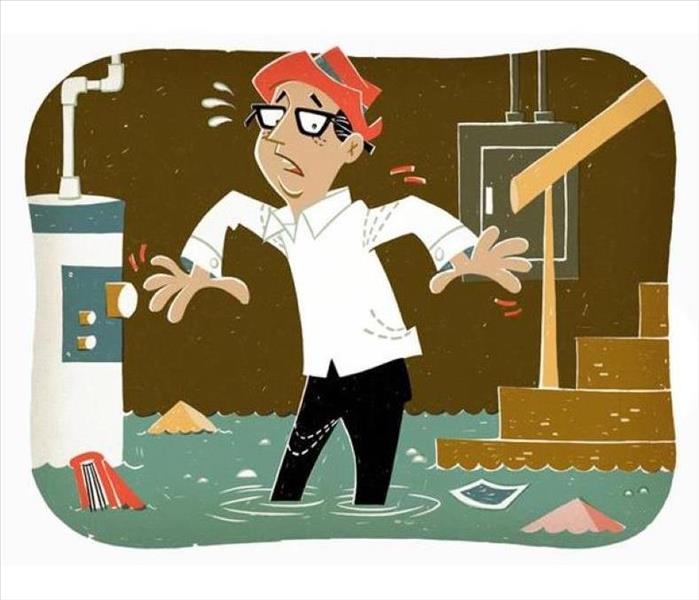 SERVPRO of Gurnee is here to help take the stress out of your water or sewer cleanup and restoration. We are available for your call 24/7/365.
SERVPRO of Gurnee is here to help take the stress out of your water or sewer cleanup and restoration. We are available for your call 24/7/365.
EJECTOR PUMP
Most homes are built so gravity can transport waste to the sewer system. For this to be possible, the home must be higher than the sewer pipes so the waste can drain properly. Sometimes, however, this isn’t possible because of a home’s location or because of plumbing in the basement that reaches deeper than the main sewer lines. In these instances, an ejector pump, sometimes called a sewage pump, is used to force sewage out of the home’s plumbing.
One of the biggest differences between an ejector pump and a sump pump is that an ejector pump has the ability to move solid waste with water pressure. The ejector pump breaks up solid waste to force it farther down the line and out to the main sewer. Without an ejector pump, basement bathrooms and any plumbing below the main sewer level would be unable to clear waste. The result would be sewage backing up into the home.
SUMP PUMP
A sump pump provides a different function than an ejector pump. Sump pumps do not deal with waste or sewage at all. Instead, a sump pump sits in a pit beneath your home. This pit is drainage for excess water that builds up during rainstorms, snowmelt, or flooding of any sort. When excess water accumulates in your sump pit, the sump pump expels the water out through pipes that drain to an exterior location far enough from your home to not cause any issues or backflow. Without a sump pump, basements could be flooded every time it rains. A sump pump ensures that you keep a dry home, even when torrential storms rage outside.
Sump pumps are mostly found in wet climates or where basements are prevalent. They are less common in dry areas or where basements are not popular.
Sump pumps cannot be joined to a sewer line. Instead, they must drain outside. Sump pumps also cannot handle debris. They generally have a screen or grate on the intake so the pump doesn’t suck up anything that could damage and ruin the pump. Sump pumps are meant to transport water only.
While each of these is important in its own right, ejector pumps and sump pumps are different tools that perform very different jobs. Ejector pumps push waste and sewage uphill to remove it from plumbing that’s below the main sewer level. Sump pumps stop your basement from flooding by evacuating water that accumulates from natural sources. If you require one of these pumps but don’t have it, the results could be disastrous.
In the event you do sustain damage from a failed ejector pump or sump pump, SERVPRO of Gurnee is here to help 24/7/365. Give us a call at 84-838-2954 for a no-cost assessment of your water damage situation.
Flood Insurance and Water Backup Coverage: What’s the Difference?
6/25/2020 (Permalink)
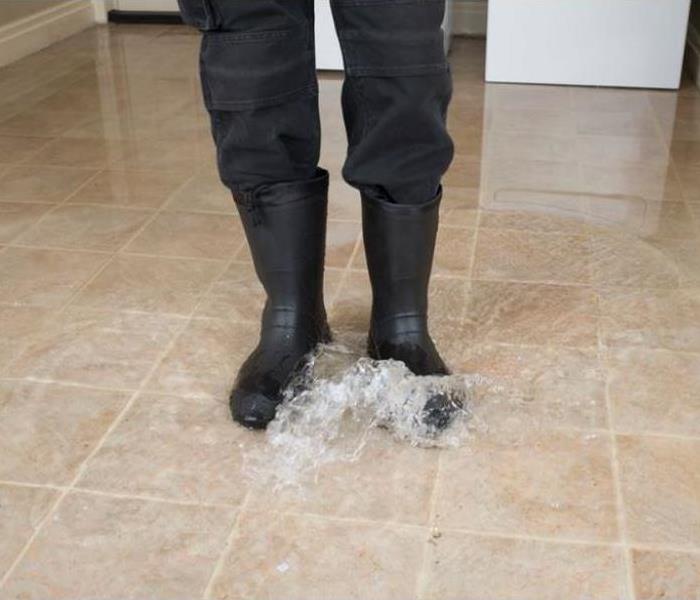 Water in your basement? The professionals at SERVPRO of Gurnee are here to help!
Water in your basement? The professionals at SERVPRO of Gurnee are here to help!
Spring and Summer in Lake County is a happy time for so many home and business owners who are ready for warmer weather, and sunshine! We Midwesterners look forward to that first day on or in the water. So what happens when that water we love so much finds its way into our basements? How can property owners recover losses to their property from flood waters?
Water/Sewer Backup Coverage
Most homeowners insurance policies come with an optional endorsement for water backup and sump discharge/overflow which will cover losses, up to a certain limit, caused by the backup of water or waterborne materials through a sewer or through a drain. It will also cover water or waterborne material that overflows from a sump, even if the backup of water is due to the mechanical breakdown of the sump pump. Coverage includes damage to property but excludes the sump pump and any related equipment that has broken down. Contact your insurance professional for more information about this coverage and its limits.
The endorsement does not cover damages caused by a flood. A separate flood insurance policy needs to be obtained to cover losses due to flooding.
Flood Insurance
What is a flood? The dictionary defines “flood” as rising and overflowing of water onto normally dry land. For the purpose of insurance, “rising” is the key to distinguish flood damage from water damage. Basically damage that has occurred from water that has been on the ground at some point before causing damage to your home is considered flood damage, and would not be covered by your homeowners insurance policy.
Flooding can happen anywhere; even if your home is not in a flood plain. Flood insurance is available to all homeowners who live in a participating community, which must enforce floodplain ordinances and building requirements that meet or exceed FEMA guidelines. If your community does not participate in the NFIP, you can make a request for it to do so through your mayor, city council or county commissioner’s office. Contact your insurance professional for more information about this coverage and its limits.
In the event you do sustain property damage from any type of flooding, SERVPRO of Gurnee is here to help. We are available 24/7/365 at 847-838-2954 for your emergencies.
Sump Pump Maintenance Checklist for Lake County Homeowners
3/26/2020 (Permalink)
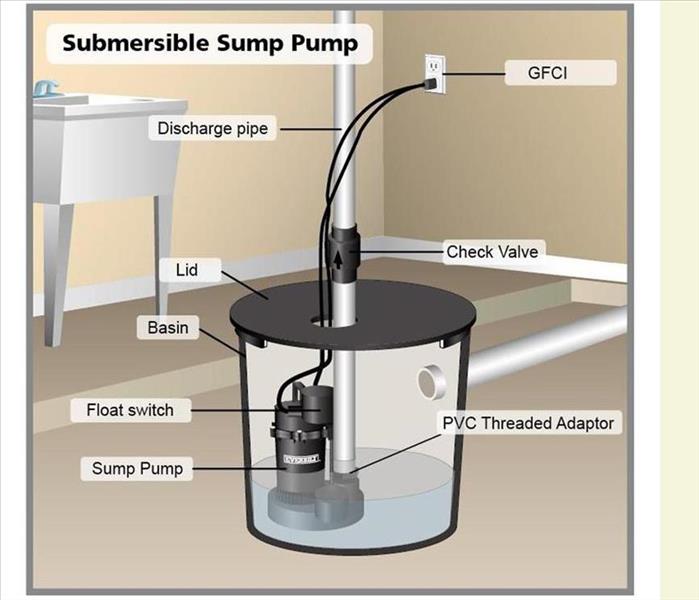 Maintaining your sump pump could potentially save thousands in water damage.
Maintaining your sump pump could potentially save thousands in water damage.
When was the last time you maintained your sump pump? Here are some tips to show your sump pump some love and keep your basement dry as we enter the rainy season of spring.
Make sure your sump pump is totally upright. Your sump pump should be sitting on solid, even ground. Any sort of leaning can shift the water in the pump’s pit and put unnecessary pressure on its components.
Open it up. Take the cover off the sump pump pit or basin and have a look inside. Clear any debris, mud or rocks that you find, as any foreign items can clog your sump pump and cause an overflow.
Double-check the drain hose. Check to make sure the drain hose is connected, and that it’s not blocked or frozen. A clogged drain hose can cause your sump pump to run continuously, as it won’t be able to dispose of the water that’s filled its pit.
Clear out the inlet screen. Make sure the inlet screen is allowing water to enter your sump pump’s pit. If your inlet screen is blocked, water won’t be able to make its way into the sump pumps pit and could lead to a basement flood.
Keep it afloat. Your sump pump’s float controls when it will turn on and pump excess water out. Make sure the float component can move freely and isn’t blocked. A malfunctioning float can cause your pump to not run when it’s supposed to, or run constantly, eventually burning out your pump’s engine.
Make sure it’s flowing away from your house. The next time you hear your sump pump running, go outside and make sure its discharge pipe is pumping the water away from your home at a safe distance. If it’s too close, the water could seep back into your pump, causing your pump to run continuously and inefficiently. The more your sump pump runs, the more likely it is to burn out early in its life span.
While you don’t want your discharge pipe too close to your house, shed, garage or other structure, make sure it does stay on your property. You’ll have some unhappy neighbors if your sump pump is pushing your excess water onto their lot.
Give your sump pump a test run. Fill the pit with a bucket of water to turn your pump on. Watch it carefully to see if it’s getting rid of the water, then check the discharge pipe outside to make sure it’s disposed of properly. If the pump doesn’t run, make sure it’s plugged in and its power cord is in working order.
Plan for the unexpected. Having a backup battery or generator can be crucial if a strong rain storm comes complete with a power outage. And eventually, your sump pump may give out without the help of a power outage. To avoid the stress of trying to buy and install a new sump pump while the water seeps closer and closer to your basement, have a backup sump pump handy — and be sure to test it regularly, too.
Call a professional. You’ve checked the power cords, discharge pipe, inlet screen and every other piece of the pump, but still can’t figure out what’s wrong. It’s time to call a professional! Risking your basement and everything else in it isn’t worth maintaining your pride as a handyman or woman — get it fixed and fast!
If worse comes to worst, and you do have a backup and need assistance with damage from water or sewage, call SERVPRO of Gurnee for 24/7 help at 847-838-2954.
Flooded Basements in Waukegan, IL
2/27/2020 (Permalink)
Flooding most often occurs during heavy rainfall, but can happen any time for a variety of reasons. Basements are more prone to flooding because they are the lowest level of a building or home and are normally built partly or entirely below ground level.
There are a number of reasons why your basement could flood, including:
- A blocked or failed sewer lateral pipe
- Heavy rain causes surface water to pool around your home
- Storm sewer backup
- Sanitary sewer backup
- Foundation drainage failure
- Water supply-line break or hot-water tank failure
SERVPRO of Gurnee personnel are Flooded Basement Specialists:
- We are Available 24 hours/7 days per week/365 days a year
- We’re a Preferred Vendor to most National Insurance Companies
- We Can Bill The Insurance Directly – One Less Thing For You To Worry About
- Our Technicians are Highly-Trained in Water Restoration Techniques
- We use s500 IICRC Restoration Standards
- We use advanced Inspection and Extraction Equipment
A flooded basement can jeopardize your health, safety, and your home’s integrity. It’s worth making a call to SERVPRO of Gurnee and letting our trained, professional crews handle the situation safely and correctly. We have earned the trust of hundreds of homeowners, business owners, and property professionals.
Basement Flooded? Call SERVPRO of Gurnee Today at 847-838-2954. We’re Ready To Help
Ice Dam Tips for Gurnee Residents
2/27/2020 (Permalink)
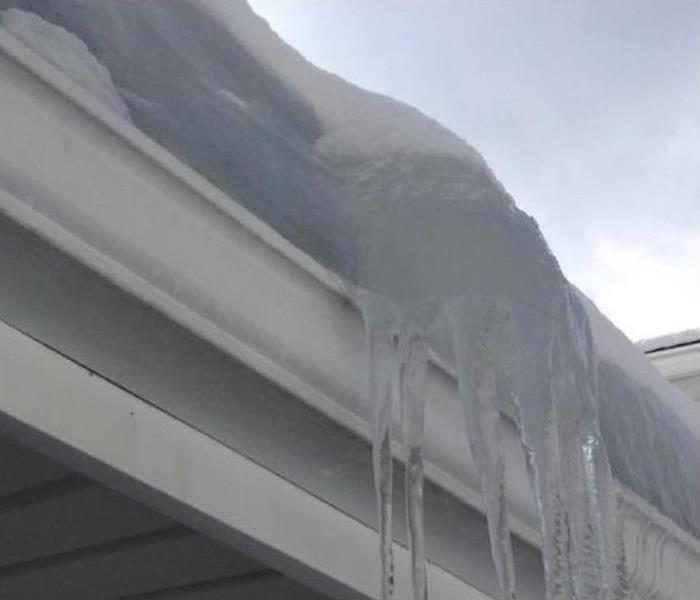 Icicles hanging from your roof might be pretty, but they could be an indication that you may have an ice dam.
Icicles hanging from your roof might be pretty, but they could be an indication that you may have an ice dam.
An ice dam is a ridge of ice that forms at the edge of a roof and prevents melting snow (water) from draining off the roof. The water that backs up behind the dam can leak into a home and cause damage to walls, ceilings, insulation and other areas. Ice dams usually occur after a heavy snowfall and several days of freezing temperatures. Frequently the result will be a water spot or leak from the ceiling or wall under the roof damage.
Tips for handling and preventing ice dams
- Don’t get on your roof yourself; it could be dangerous.
- Avoid standing on the ground and “chipping away” at the ice. Not only could this cause damage to your roof, but you can be seriously injured by falling ice and debris.
- Seal air leaks and duct air leaks in your attic to stop warm air leakage.
- Check your attic insulation, replace anything damaged, and add additional insulation. This prevents warm air from your home from getting in your attic.
- Provide adequate attic ventilation. Check to make sure attic insulation is not blocking roof ventilation. Your attic should be a temperature similar to the outdoor temperature.
- Clean leaves and other debris from gutters before the first snow. This will help prevent ice build-up in gutters.
- Have an energy specialist or air sealing professional do an in-home evaluation. A good specialist will use diagnostic equipment to evaluate the performance of your home and generate a customized list of improvements.
If you have experienced interior water damage in your home or business, please utilize the professionals at SERVPRO of Gurnee. Our trained technicians are available 24/7/365 to assist with your water emergencies. Call today at 847-838-2954.
Dealing with a Water Loss: What to Expect
1/27/2020 (Permalink)
Water and flooding emergencies can happen at any moment and can be devastating. SERVPRO of Gurnee provides emergency cleaning and restoration services 24 hours a day 7 days a week – including holidays.
Initial steps we take:
- Upon arriving, we will survey the damage and premises, identifying any safety concerns. Our first priority is to attempt to “preserve and protect” your structure and contents.
- Identify the source or type of water and make sure that its source has been stopped. Water that is contaminated, such as sewer water requires specialized cleaning.
- Identify and locate any visible mold growth. Mold can create health concerns for anyone in the household.
- Measure temperature and humidity for the drying analysis; this process will determine what equipment we will need in order to remove all the moisture from the contents and structure. This is very important because it helps minimize property damage and mold growth.
We understand when dealing with a water or flooding loss you may feel scared, confused and stressed. During this difficult time, you need a company with the experience and training to help you through it. SERVPRO of Gurnee has the water damage experience and training to help you through this tough time.
Content Restoration after Water Damage
1/6/2020 (Permalink)
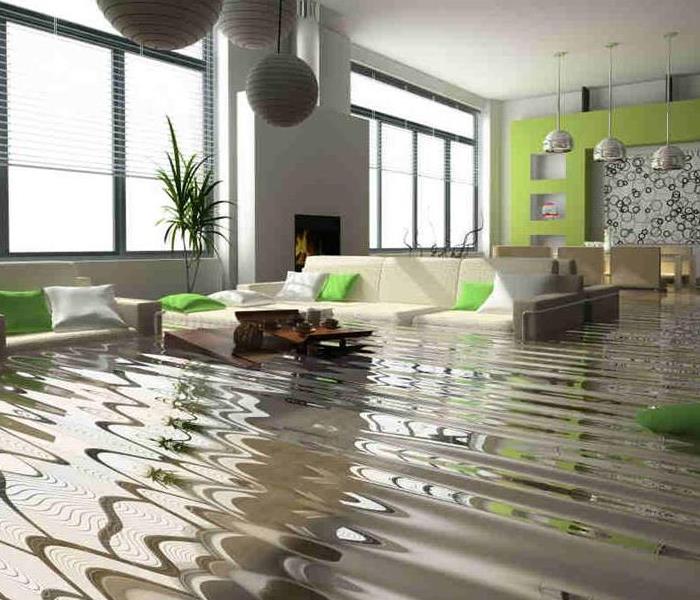 SERVPRO of Gurnee can help dry and restore your commercial or residential space.
SERVPRO of Gurnee can help dry and restore your commercial or residential space.
Restore Vs. Replace
SERVPRO of Gurnee mitigation professionals specialize in cleaning contents after water damage. SERVPRO of Gurnee strives to restore instead of replace to help keep insurance costs down and save your sentimental items. So how do we assess items that have been exposed to water? There are a few main considerations:
- Class of water affecting the items. Is the water contaminated?
- Materials affected. Are the items made of porous or non-porous materials?
- Length of time affected. How long has the water been standing stagnant?
When should you replace?
- Soft/Porous contents affected by water containing sewage. Category 3 or “Black Water”
- Materials have been affected for an extended period of time and are showing signs of microbial growth.
When can you restore?
- Hard contents that have not been penetrated by contaminated water.
- Soft contents that have been affected by Category 1 or “clear” water and sometimes Category 2 “gray” water.
At SERVPRO of Gurnee, our first step is to determine which items have been exposed to water as well as to what category of water. Then we make sure the items are dry and free of any moisture. This helps our water damage professionals determine what can be saved and what cannot. This process is also used for furniture, upholstery, and carpet cleaning and restoration.
How to Prevent Water from Damaging Your Foundation
6/26/2019 (Permalink)
The foundation of your home is an important structural element. Without a good foundation, your home will be in big trouble. The house could shift dramatically, causing damage to the building. Thus, proper maintenance of your home’s foundation is essential.
Water damage is the number one culprit that weakens your home’s foundation. It can damage your home’s foundation in a variety of ways such as:
- Pooling – Water pooling on the surface around the perimeter of the house eventually degrades concrete and mortar foundations. Causes of pooling include:
- Downspouts that are too short, which allow discharged water to flow back toward the house.
- Overflowing rain gutters that allow cascading water to the ground.
- Poor landscaping that may cause water to stagnate.
- Groundwater – This is where hydrostatic pressure pushes against the underside of the foundation. This causes water to infiltrate the basement through cracks and joints.
- External pressure – This occurs when loosely packed soil adjacent to the foundation absorbs a large volume of water.
Repairing foundation damage can be expensive. Most homeowners will pay around $5,000 to repair foundation issues or more if the repairs are serious.
With that in mind, here’s how to prevent water from damaging your foundation.
1. Utilize berms or swales.
If properly built, berms can greatly reduce storm runoff. Berms are raised areas of ground that encourage water to drain downward, away from your home.
Swales are drainage ditches. They help prevent the foundation from becoming wet. Like ditches, swales collect storm water from roads, driveways, parking lots and other hard surfaces.
2. Install a French drain.
French drains provide an easy channel for water to flow through. The drain includes a perforated or slotted pipe that helps direct groundwater or surface water away from a certain area, such as your home’s foundation.
Before installing a French drain, there are many factors you should take into account. For example, the drain flow, drain pipe length, drain aggregate, and the drain depth.
To site a French drain, look for areas where water pools for long periods of time. For example, areas like a basement, on the outdoor patio, and in the backyard.
3. Make sure the flower beds around your foundation have borders with openings.
If you don’t do this, water may pool around your home’s foundation. On the other hand, if your flowerbeds have borders with openings, water can run out of the beds and down into the yard.
For the bushes and hedges near your foundation, allow for sufficient air flow between them. This way, you’ll prevent the soil from retaining moisture and enable water to evaporate more quickly.
4. Install gutters with downspout extensions.
Rain gutters are designed to pull water away from your foundation. They are critical to protecting your home’s structural integrity. Downspouts are designed to move water away from your home.
Without gutters and downspouts, rainwater will flow off to the edges of your roof and onto the ground around the perimeter of your home. Also, if the downspouts are short, they may fail to carry water far away. This may cause disaster.
To solve this issue, install gutters with downspout extensions. The following are ways to extend downspouts:
- Install a hinged elbow. Extending the downspout using a hinged elbow allows for better drainage and freedom of movement.
- Attach a roll-up sleeve. Roll-up sleeves are perfect for those areas that need to remain uncluttered. A roll-up sleeve placed at the end of your existing downspout will sufficiently extend it to allow for drainage away from the home.
- Use a splash block. Splash blocks help to direct the water onto the lawn and away from the house. If you end up using it, simply place it underneath the downspout.
- Use a drainage pipe. This is a DIY project that any homeowner can perform. Simply dig a trench, lay the pipe and back-fill it with soil. Besides the drainage pipe, you’ll also need adapters, couplings, T-fittings, elbows and other PVC specialty fittings.
5. Make sure that your lawn is sloped away from your home’s foundation.
Does your lawn slope toward your home? If so, it’s a recipe for foundation damage. Adjust it!
A lawn with an improper slope can result in serious damage to your home’s foundation. Besides causing potentially expensive foundation problems, an improper slope can cause other issues. For example, this can cause damage to sidewalks.
To keep water away from your foundation, your yard should slope at least six inches over a 10-foot span. This should give you at least a 2% grade. This way, any excess rainwater will drain away from your foundation.
Preventing water damage is a lot cheaper than paying for repairs. If you follow these five tips, you’ll not only reduce maintenance costs but you’ll also add years to your home.
April showers can't beat May
5/28/2019 (Permalink)
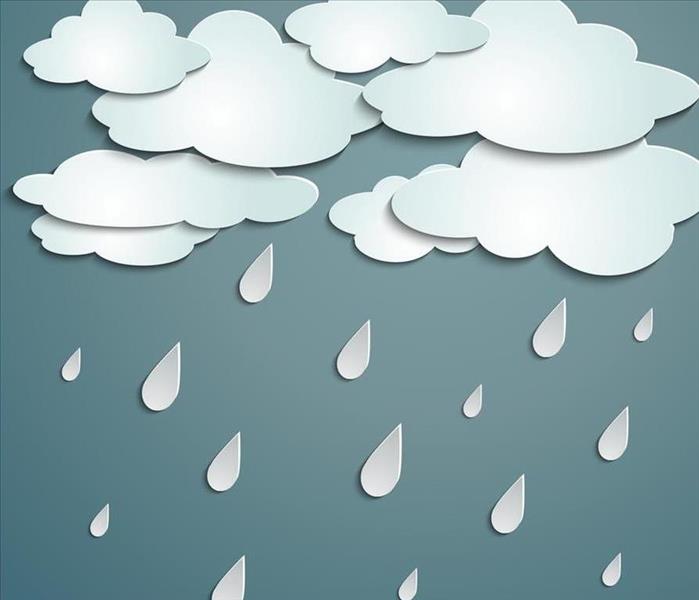 Rain, rain GO AWAY!
Rain, rain GO AWAY!
Lake County has seen a lot of rain this month. May is for enjoying the bloom from Aprils' showers but it seems Mother Nature has different plans this year. It's almost like everything is behind a month. The steady rain has been falling and falling saturating everything. The water table has risen and we don't know what areas will be over saturated and begin flooding soon. Almost the whole area has been on constant flood warning. Low lying areas will show signs of flooding first but sometimes flooding occurs when we least expect it.
When a flooding incident or water damage strikes, it is never a planned event. We can make preparations for heavy rain events or take precautions with our homes plumbing but it is impossible to know when water will flood and damage our home or business.
Here at SERVPRO of Gurnee we provide 24/7 emergency response and our equipment and highly trained techs have the experience to handle the unpredictability of these events. We have an emergency response crew on-call after business hours just in case of an emergency. Our on-call hours are everyday of the year including holidays.You can expect an immediate response day or night. We are “ Faster to any disaster.”
So if this rainy May has caused you to have water issues, don't wait and give SERVPRO of Gurnee a call today 847-557-1080.
Warning Signs of Water Damage
3/7/2019 (Permalink)
Flooding is very common in Lake County, but water damage can come from many different places and is not just a problem for people living here. While the damage from a flood is pretty apparent, there are many ways water damage can happen to your home when you don’t even realize it.
Here are some common causes of water damage and how you can spot them:
-Weather is a common cause of water damage. Rains (snow and ice during the winter) cause flooding that can get into your home. Ice is an especially insidious cause of water damage because it expands as it freezes, causing cracks that allow more water to enter your home.
Even if it isn’t raining or snowing there is still moisture in the air. Damp air can lead to condensation and water damage to your walls. This is especially true of basements, bathrooms, and other damp areas of your home that don’t get much airflow.
-Appliances like your washing machine, garbage disposal, water heater, toilet, and air conditioner can all contribute to water damage if they leak or stop draining properly.
-Water from our pipes and plumbing systems can also cause water damage. Leaks and drips can go on for months, or even years, raising your water bill and doing unseen damage to your home.
What are the signs of water damage? Here are a few warning signs that you have a water damage problem in your home.
-Standing water – This may sound pretty obvious, but if you notice water pooling in your house you have a water problem that needs to be taken care of immediately.
-Bad smells – While water doesn’t normally have much of a smell, the mold and bacteria that grow in damp environments can give off a distinct musty, wet odor. If you smell mold or mildew you might have a water issue.
-Stains and spots – Stains on the ceilings or walls can be a sign of water damage. You might have a leaky pipe or roof. Call a professional to determine the cause of the problem and to clean up the damage before it becomes a serious mold problem.
-Peeling paint – Paint damaged by water will start to peel, bubble, or flake off.
-Uneven surfaces – Water damage can cause floors, ceilings, walls, and other surfaces to warp and feel uneven.
-Cracks – Water is always seeking the path of least resistance out of your home. Water can enter through cracks and once water finds its way in, the crack will expand allowing even more to get into your home. Make sure you seal all visible cracks on your property.
If you notice your home has water damage call the experts at SERVPRO of Gurnee 847-557-1080
Water Damage Event Timeline
3/1/2019 (Permalink)
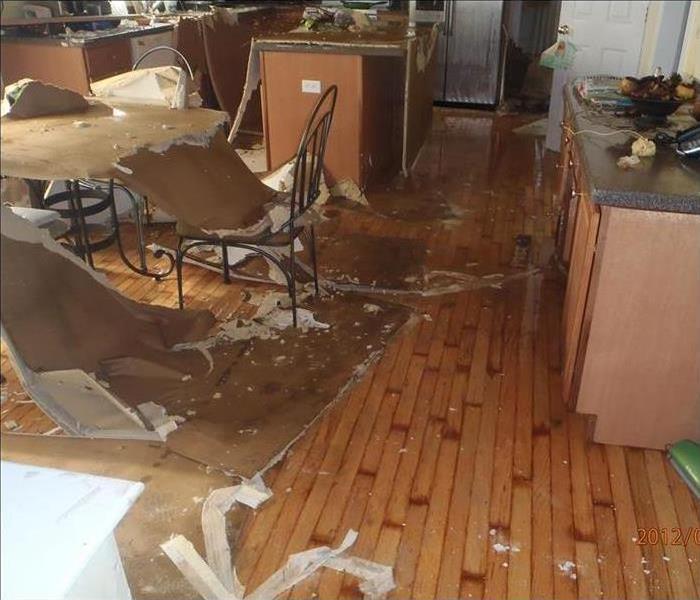 Time is crucial when water damage occurs
Time is crucial when water damage occurs
Water Damage Timeline
Within Minutes
- Water quickly spreads throughout your property, saturating everything in its path.
- Water is absorbed into walls, floors, upholstery, and belongings.
- Furniture finishes may bleed, causing permanent staining on carpets.
- Photographs, books, and other paper goods start to swell and warp.
Hours 1 - 24:
- Drywall begins to swell and break down.
- Metal surfaces begin to tarnish.
- Furniture begins to swell and crack.
- Dyes and inks from cloth and paper goods spread and stain.
- A musty odor appears.
48 Hours to 1 Week:
- Mold and mildew may grow and spread.
- Doors, windows, and studs swell and warp.
- Metal begins to rust and corrode.
- Furniture warps and shows signs of mold.
- Paint begins to blister.
- Wood flooring swells and warps.
- Serious biohazard contamination is possible.
More Than 1 Week:
- Restoration time and cost increase dramatically; replacing contaminated materials and structural rebuilding may be extensive.
- Structural safety, mold growth, and biohazard contaminants pose serious risks to occupants.
SERVPRO of Gurnee specializes in the cleanup and restoration of residential and commercial property after a fire, smoke or water damage event. Our staff is highly trained in property damage restoration. From initial and ongoing training at SERVPRO’s corporate training facility to regular IICRC-industry certification, rest assured our staff is equipped with the knowledge to restore your property. We arrive quickly and start the water extraction process almost immediately. This immediate response helps to minimize the damage and the cleaning and restoration costs.
Do not wait to call! Need Emergency Service? Call Us 24/7 – 847-557-1080
Who is Responsible for Water Damage in your Gurnee Apartment?
2/27/2019 (Permalink)
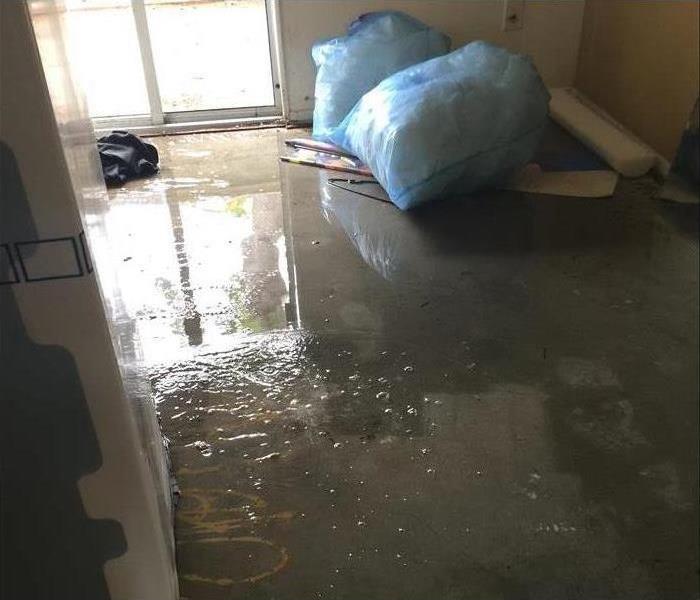 Do you know who is responsible?
Do you know who is responsible?
Unfortunately, water damage is a common issue homeowners, landlords and renters can face. The aftermath can be devastating making the property unlivable and permanent damage may occur to personal belongings. When water damage occurs in an apartment, who is responsible for the damage cost? The property owner or renter?
Renter rights
Water damage can be unpredictable and it is important to understand your renter rights and understand who is responsible for what in such an event. In general, a landlord is responsible for maintaining the property ensuring that the apartment is livable and functioning up to code. The landlord may refuse repairs, or fail to address them quick in enough – causing further damage such as mold. In the United States, basic principles in tenant rights are in place and outline the party liable for damages. Depending on the state, rent details can vary so check with your local housing authority.
Review your lease
It’s important to know what your lease states regarding property damage. Most properties have property insurance and will list what type of damage that is covered and what is not. The lease may specify actions that may be in place depending on the severity of the water damage. If the damage is severe and the apartment is unlivable is the tenant still required to pay the rent? Can the landlord evict the tenant or can the tenant cancel their lease without penalty? In general, if the damage is minor, the tenant will not be able to cancel the lease agreement. If the terms regarding property damage are not listed in the lease, speak to your landlord about who is responsible in the event when water damage strikes.
Renter’s insurance
Accidents happen which is why it is essential to have renter’s insurance. Most places require you have it before allowing you to move in an apartment. Depending on the plan you select, coverage can vary from damages to the building, personal content and may even cover the cost of lodging while repairs are being completed.
Landlord Responsibilities
The landlord is responsible for maintaining a functional apartment ensure that it is livable. The upkeep of basic plumbing such as sinks, toilets and tubs fall on the shoulders of the landlord. Failure to maintain or repair these functions may lead to property damage and the landlord is liable due to negligence.
Damage to property and personal belongings
Water damages caused to the building itself such as flooring, walls and utilities should be covered under the landlord’s property insurance. Personal property damages fall to the responsibility of the party at fault for damages, which can be the tenant. For example, if the tenant leaves a faucet on and falls asleep causing water damages.
How SERVPRO of Gurnee can help
Water damage requires a rapid response in order to minimize loss to both the property itself and belongings inside. We are experts at water damage cleanup in apartments and building of all sizes no matter severity of the damage. Our team of experts will assess the damage and develop an appropriate plan to restore and recover your property and contents. Contact us by calling 847-557-1080 to learn more about our water damage clean-up services.
Polar Vortex 2019 Water Damage
2/1/2019 (Permalink)
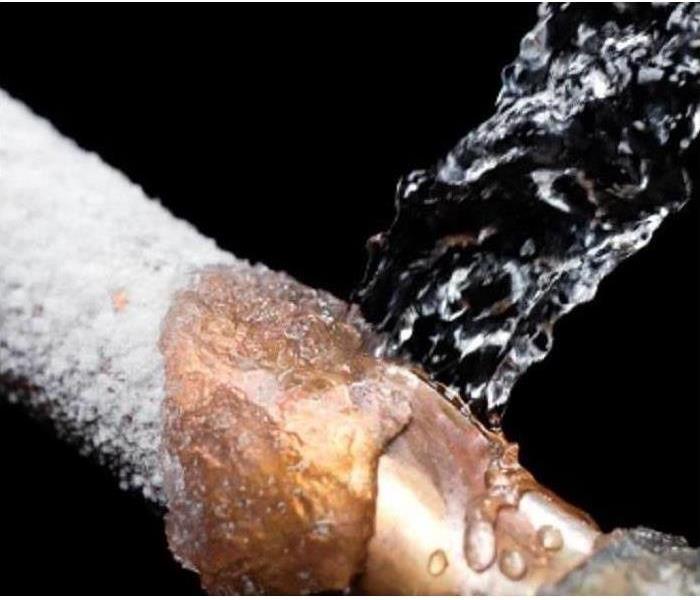 We offer estimates for your convenience
We offer estimates for your convenience
The deep freeze has come and gone, bringing with it frozen and burst pipes. Damage can be obvious, but sometimes it's not noticed right away causing more issues down the road.
Signs that you have a burst pipe
-water marks on ceilings or walls
-standing water and puddles
-water discoloration and odors
-water pressure issues
-strange sounds when using water
If you find you have a burst pipe, use these four steps
- Turn off your water supply
- Trace the water/damage and locate the damaged pipe
- Call a Plumber to repair
- Bring in a professional drying crew
SERVPRO of Gurnee is here with the professional equipment and experience to dry and clean your home. Our goal is to restore everything like it never happened. We will keep you updated and informed throughout your experience. Call us today!
Don't forget to test your Sump Pump
You may have survived the freeze, but are you prepared for the flood? The upcoming thaw means increased water in the area. A quick check of your sump pump will ensure proper functioning that can save you from further water damage. Click the link to learn how to test your sump pump
https://homeguides.sfgate.com/test-sump-pump-34954.html
Frozen Pipes Tips
3/7/2018 (Permalink)
We have received many calls for frozen pipes causing damages in commercial and residential properties. Many have unexpectedly discovered their pipes have frozen and seek the help of a professional to unthaw and fix the problem. With winter’s arrival and freezing temperatures among us here are some tips to protect pipes from freezing:
- Allow water to drip when temperatures are below freezing
- Keep your thermostat set at the same temperature during the day and at night
- Do not let the temperature go below 55 degrees* in your home/business.
- For pipes underneath cabinets, open the door so warm air can circulate around the pipes
- If there are outside faucets, make sure that your garden hose is removed and stored. For additional precautions turn the water off at the water main and open the outside faucet to drain completely
- Check for any cracks or holes that may be letting air into the structure near water pipes. If detected, seal them.
- Add insulation to pipes that run alongside the exterior walls
- Make sure that the garage door remains closed if there is water lines located in the garage
Frozen pipes in your commercial business or residential home can cause a lot of damage. After the plumber has fixed the problem call SERVPRO of Gurnee to come out for an inspection at 847-557-1080.
*For more tips visit the American Red Cross website
Vernon Hills Residents: Is Your Property Ready for Winter?
11/20/2017 (Permalink)
Cold weather is approaching, and it’s important to prepare your home or business for the winter months. Freezing temperatures can cause frozen pipes. Heavy rains with improper drainage can force water back into your home or business. Snow and ice sitting on top of full gutters can force water into your attic as the sun and temperature fluctuations cause the snow and ice to melt. Here are some proactive measures to prepare your home or business for the winter:
• Inspect your roof, gutters, and downspouts. It’s a good idea to check your roof after every storm or heavy rain event. If you haven’t done that yet, now is the time to inspect for any roof damage or potential hazards that can keep standing water on your roof. Avoid ice damming this winter by cleaning your gutters from leaves and other debris. Also, double check that your downspout is directed away from your building or home to avoid water being forced at your home or business.
• Walk your property to look for any obstacles that could cause personal injury such as fallen branches. While you are walking the exterior of your residence or business also check for proper drainage.
• Disconnect your garden hose and store away this winter to avoid freezing your hose bib (or sillcock). This will help avoid a flooded basement this coming spring when you go to use your hose for the first time.
• Install mats or non-slip surfaces to avoid slips this winter.
• If you own a home or business, let SERVPRO of Gurnee & SERVPRO of Libertyville/N. Chicago City/Lake Bluff set up your building with a no cost assessment called an Emergency Ready Profile. This provides your business with a plan to get back in operation should disaster occur.
When winter weather arrives, SERVPRO of Gurnee & SERVPRO of Libertyville/N. Chicago City/Lake Bluff wants you to be prepared. If the unexpected frozen pipe, ice damming, or water in your basement happens to your Vernon Hills home or business, call us 24/7 365 days a year at 847-557-1080.
Electronics that Experience Water Damage
9/21/2017 (Permalink)
With all the recent flooding from the severe storms, many homes and businesses have experienced water damage. We specialize in cleaning contents after water and fire damage. SERVPRO of Gurnee & SERVPRO Libertyville/ N. Chicago City. Lake Bluff always tries to restore verse replace to help keep insurance costs down and salvage sentimental items. So how do we assess electronics that have been exposed to water? Our first step is to determine how the electronics have been exposed to water.
Has the item been completely submerged?
When we find an electronic that has been completely underwater, these items may not be restorable because of circuit failure, the motor shorting out, corrosion and heavy rust. Our content cleaning technician looks for these signs and also notes what category of water the electronic sat in, the length of time, how much of the electronic was exposed, and other observations are made with each individual electronic brought in. In our pre-testing if a submerged item is considered un-restorable, our team removes the item from site and carefully inventories the item for homeowner/ business owner for insurance purposes.
Did water drip on the electronic?
We don’t assess the electronic just by the external appearance, but we are certain to do a thorough inspection, and we determine if we can clean and dry out the electronic. If water drips on an electronic, we open it up and inspect if the water has affected the internal components. Before making the final decision that the item was able to be saved, we do a final test to be certain of proper preloss functioning.
Has the electronic been exposed to high humidity only?
After a home or business experiences any water damage, the humidity in the environment increases. High humidity with electronics exposed for any amount of time is a cause for concern. Over time, electronics naturally attract particles from the air and dust. When an electronic is exposed to humidity, the dust on the electronic can act as a sponge for moisture particles and pull in the moisture internally. The electronics may initially work, but over time may see that corrosion and rust set in without an inspection. Electronics exposed to high humidity also have to be opened up, inspected, cleaned, dried, and undergo final testing before determining that the item will function.
***
Each content that we receive is looked at individually if the item can be cleaned and restored. SERVPRO of Gurnee & SERVPRO of Libertyville/N. Chicago City/ Lake Bluff restores several different contents including electronics after a fire or water damage in a residential or commercial loss. Each loss is unique and different, and affects the structure and contents differently depending on the type of loss, length of time, and category of water.
Water Types
9/21/2017 (Permalink)
All the recent severe rains and unexpected flooding in Gurnee, Grayslake, Libertyville, Lake Bluff, Lake Forest, Round Lake and Mundelein experience on July 12th, 2017 brought our SERVPRO of Gurnee & SERVPRO of Libertyville/N. Chicago City/ Lake Bluff several calls, questions, and comments. One topic we found ourselves explaining frequently was water types.
When you home or business experiences water damage, there are different categories of water that we have to clean up with different levels of contamination.
- Clean Water is that water that comes from a broken pipe, sink or tub overflow, or appliance malfunctions from a water line.
- Gray Water is slightly contaminated water and can come from a dishwasher or clothes washer discharge.
- Black Water is very contaminated and comes from sewage damage, aquarium leak, toilet overflow, flooding, or natural disaster. This water is filled with fungi, bacteria, chemicals, and more.
All types of water, left untreated, will allow bacteria, contaminates, fungi, bacteria, and microbial growth to occur. Having a SERVPRO technician come out to your home to provide an inspection will show you where you have water, what water type is in your home, and the proper industry guidelines for cleaning your home to an industry standard.
Water Damage Tips
9/21/2017 (Permalink)
Here are some tips for clean water and contaminated water before help arrives.
Clean Water
- Shut off water source if possible.
- Do not enter rooms with standing water, as electric shock hazards may exist.
- Turn off circuit breakers for those areas that are wet if access is safe from potential electric shock.
- Remove as much excess water as possible by mopping and blotting in rooms without standing water.
- Protect carpet from staining by placing foil, plastic wrap beneath furniture legs.
- Remove cushions and prop to allow for even drying.
- Move paintings, documents, or other valuable items that may be sensitive to moisture.
- Do not leave books, newspapers, magazines or any other colored item on the floor as these items may cause staining.
- Do not use a household vacuum cleaner.
- Do not turn on ceiling fixtures (if ceiling is wet).
- Do not enter rooms where ceiling is sagging from retained water.
Contaminated Water
- Avoid all contact with sewage and items contaminated by sewage.
- Wash your hands thoroughly if you come in contact with contaminated items.
- Do not walk through contaminated areas, as you could spread damage to unaffected areas.
- Do not turn on the HVAC system because there is a possibility to spread contaminated air.
- Do not use household fans to dry the structure because the air flow could cause contaminates to spread.
- Throw away any food and/or products for personal hygiene if exposed to the contaminated area.
Call SERVPRO of Gurnee and SERVPRO of Libertyville/N. Chicago City/Lake Bluff at 847-557-1080 for an inspection for your water damage.
Fox Lake Residents: We Specialize in Flooded Basement Cleanup and Restoration!
7/11/2016 (Permalink)
A basement can flood at any time, although flooding most often occurs during heavy rainfall. Basements are inherently prone to flooding because they are the lowest level of a building and are normally built partly or entirely below ground level. There are a number of reasons why your Fox Lake basement could flood, including:
· A blocked or failed sewer lateral pipe
· Heavy rain causes surface water to pool around your home
· Storm sewer backup
· Sanitary sewer backup
· Foundation drainage failure
· Water supply-line break or hot-water tank failure
· And many more
Have Questions about Basement Flooding?
Call Today -847-838-2954
If flood water is not handled quickly and properly, it can jeopardize your health and safety, and cause severe damage to your home’s structure. Remember, the longer you wait, the worse the problem will get.
The bottom line: a flooded basement can jeopardize your health, safety, and your home’s integrity. It’s worth making a call to SERVPRO of Gurnee & SERVPRO of Libertyville/ N. Chicago City/ Lake Bluff and let our trained, professional crews handle the situation safely and correctly. We have earned the trust of hundreds of homeowners, business owners, and property professionals.
We are Flooded Basement Specialists:
· We are Available 24 hours/7 days per week
· We’re a Preferred Vendor to many National Insurance Companies
· We Bill The Insurance Directly – One Less Thing For You To Worry About
· Our Technicians are Highly-Trained in Water Restoration Techniques
· We use s500 IICRC Restoration Standards
· Advanced Inspection and Extraction Equipment
Basement Flooded? Call Us Today- We’re Ready To Help 847-838-2954
Faster to your Zion Water Damage Event
7/11/2016 (Permalink)
Flooding and water emergencies don’t wait for regular business hours and neither do we. SERVPRO of Gurnee & SERVPRO of Libertyville/ N. Chicago City/ Lake Bluff provides emergency cleaning and restoration services 24 hours a day, 7 days a week—including all holidays.
Faster To Any Size Disaster
Flooding and water damage is very invasive. Water quickly spreads throughout your home and gets absorbed into floors, walls, furniture, and more. SERVPRO of Gurnee & SERVPRO of Libertyville/ N. Chicago City/ Lake Bluff arrives quickly and starts the water extraction process almost immediately. This immediate response helps to minimize the damage and the cleaning and restoration costs.
Need Emergency Service? Call Us 24/7 –847-838-2954
Water Damage Timeline
Within Minutes
· Water quickly spreads throughout your property, saturating everything in its path.
· Water is absorbed into walls, floors, upholstery, and belongings.
· Furniture finishes may bleed, causing permanent staining on carpets.
· Photographs, books, and other paper goods start to swell and warp.
Hours 1 - 24:
· Drywall begins to swell and break down.
· Metal surfaces begin to tarnish.
· Furniture begins to swell and crack.
· Dyes and inks from cloth and paper goods spread and stain.
· A musty odor appears.
48 Hours to 1 Week:
· Mold and mildew may grow and spread.
· Doors, windows, and studs swell and warp.
· Metal begins to rust and corrode.
· Furniture warps and shows signs of mold.
· Paint begins to blister.
· Wood flooring swells and warps.
· Serious biohazard contamination is possible.
More Than 1 Week:
· Restoration time and cost increase dramatically; replacing contaminated materials and structural rebuilding may be extensive.
· Structural safety, mold growth, and biohazard contaminants pose serious risks to occupants.
About SERVPRO of Gurnee & SERVPRO of Libertyville/ N. Chicago City/ Lake Bluff
SERVPRO of Gurnee & SERVPRO of Libertyville/ N. Chicago City/ Lake Bluff specializes in the cleanup and restoration of residential and commercial property after a fire, smoke or water damage event. Our staff is highly trained in property damage restoration. From initial and ongoing training at SERVPRO’s corporate training facility to regular IICRC-industry certification, rest assured our staff is equipped with the knowledge to restore your property.
Lake Forest 24 Hour Emergency Water Damage Service
7/11/2016 (Permalink)
SERVPRO of Gurnee & SERVPRO of Libertyville/ N. Chicago City/ Lake Bluff is available 24 hours a day for water emergencies, large or small. When you are dealing with water damage, immediate action is crucial. A delay of just a few hours can greatly increase the severity of the water damage.
We Answer the Phone Ready to Help Call Today – 847-838-2954
We understand that when you call us, you may be feeling confused, stressed, and vulnerable. You need an expert to guide you through this crisis. SERVPRO of Gurnee & SERVPRO of Libertyville/ N. Chicago City/ Lake Bluff has the specific water damage training and experience to help you through this tough time. We specialize in water damage restoration—in fact, it's the cornerstone of our business.
What to Expect
When you call, we will ask several questions regarding your water damage emergency. These questions will help us determine what equipment and resources to bring, including how many trained SERVPRO Professionals may be needed.
Our SERVPRO Representative will ask several questions:
· Your name and contact information
· Your insurance information (if applicable)
· The street address of the water-damaged home or business
· When did the flooding or water damage occur?
· What caused the water damage (if known)?
· Is there electricity available (on-site)?
About SERVPRO of Gurnee & SERVPRO of Libertyville/ N. Chicago City/ Lake Bluff
SERVPRO of Gurnee & SERVPRO of Libertyville/ N. Chicago City/ Lake Bluff specializes in the cleanup and restoration of residential and commercial property after a fire, smoke or water damage event. Our staff is highly trained in property damage restoration. From initial and ongoing training at SERVPRO’s corporate training facility to regular IICRC-industry certification, rest assured our staff is equipped with the knowledge to restore your property.
We Are Flooded Basement Specialists
3/14/2016 (Permalink)
· We are Available 24 hours/7 days per week
· We’re a Preferred Vendor to many National Insurance Companies
· We Bill the Insurance Directly – One Less Thing For You To Worry About
· Our Technicians are Highly- Trained in Water Restoration Techniques
· We use s500 IICRC Restoration Standards
· Advanced Inspection and Extraction Equipment
Basement Flooded? Call Us Today – We’re Here To Help – 847-557-1080


 24/7 Emergency Service
24/7 Emergency Service























